Let’s grace this first week of 2011 with a very tangible topic to balance the organizational aspect of the two previous posts. And I’ll make one further bid to put an item on your Resolutions list that will make you a better innovator and project manager. We start with the question: What’s the last thing you prototyped and how frequently are you doing it?
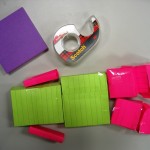
Prototyping: Why? … and why do it right up front?
Whether you’re changing product features, creating new service elements, or transforming an organization, you can count on a good prototype to
– garner the most genuine and helpful feedback
– resolve conflict and confusion within a team
– generate buy-in from team members, bosses, partners and funders
– shorten the development timeline by revealing and avoiding snags that could cause a project re-set later
– reduce risk, by working through known challenges right up front
…while also accomplishing what is usually assumed to be the main purpose
– to advance the state of a new idea.
This list points to the strength of prototyping all along the way of a development process, from the fuzzy front end to implementation. Any process point with all that going for it, can help me anytime and with a broad range of challenges.
If you take on the challenge to be a Frequent Prototyper, you’ll want to go beyond making the one prototype that is proof-of-concept and transition point between conceptual thinking and implementation. How about these other moments:
any time the team disagrees about how to proceed,
any time someone’s vision is unclear,
any time you have something new-to-the-world where people’s feelings and reactions are unknown,
any time there’s a bit that might give you trouble later in implementation.
So this first dimension along which to stretch prototyping, is in addressing a few distinct levels of refinement. If we engage in making the roughest of prototypes (think kindergarten level like that first photo), then conversations can develop more easily and quickly. If we expose important stakeholders to a developing set of rough prototypes, then barriers between team members, departments or with partners can soften.
Consider working through these three stages of prototyping purpose, as outlined by Hans Haenlein (IDEO):
Inspire: Share concepts of what could be
Evolve: Show what would be depending on how a few parameters are chosen
and
Implement: Create the first of what will be.
And in stepping through each of these prototyping stages, expect increases in resolution of the models, time investment, and professional nature of those creating the models, while the number of concepts on the table and the fuzziness around the spec are both decreasing.
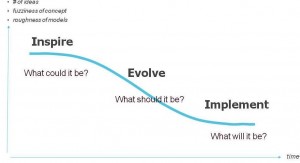
How broadly do you think you could use it … and spread it?
Perhaps you already are a Frequent Prototyper, developing solutions through iterative mock-ups that range from rough-quick-cheap to finely tuned. You may now want to consider encouraging a culture of prototyping. Firstly you’ll want to make it OK to work at the three levels described above, accepting even rough work in early stages to get more ideas on the table quickly and cheaply.
Secondly, you’ll want to promote the different flavors prototyping comes in. The word “prototype” brings to mind product models, both functional and cosmetic, and it’s a small stretch to consider mock-ups of service touchpoints to be prototypes as well. … but beyond this, say, when prototyping organizational change, we sometimes anchor the concept of prototyping to “experiment.” Whatever it takes for a group to understand the tentative nature and that mistakes are welcome as they help us explore and tune a new design.
For example:
When prototyping service concepts, we use physical models (brochures, kiosks, media storage devices) and virtual models (U.I.’s, videos of the experience, CAD, information architecture models, role play). Then we tie them to an essential and overarching prototype, sometimes called the “service blueprint.” This takes the customer journey to a more defined and visual step, allowing internal departments to rally behind a concept and commit to development, launch and operations efforts. They are able to do this because every step of the way is outlined, and everyone can give input to the plan.
Organizational change can also benefit from prototyping by inserting into a plan-for-change one or more brief rounds of experimentation. The caveat here: it works best if your participants, change facilitators and leaders are flexible, communicative and robust. Organisational prototyping may include role playing away from the normal physical site, trialing new behaviors iteratively in context, and translating the real world into a new or metaphorical landscape that allows people to think different and break old boundaries.
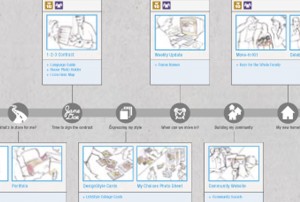
Organizational change can also benefit from prototyping by inserting into a plan-for-change one or more brief rounds of experimentation. The caveat here: it works best if your participants, change facilitators and leaders are flexible, communicative and robust. Organisational prototyping may include role playing away from the normal physical site, trialing new behaviors iteratively in context, and translating the real world into a new or metaphorical landscape that allows people to think different and break old boundaries.
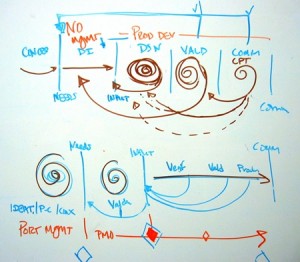
Bringing it back full circle to the product arena, manufacturing processes, too, can use these same methods that organisational experiments do: metaphor and enactment – to stretch across the boundaries of experience and vocabulary that different departments have.
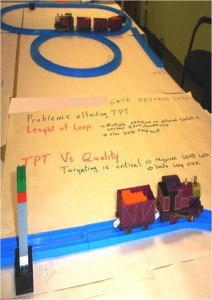
Whatever you do…
Just remember to
- Focus the prototype on areas where you want to discover or test or prove. (Don’t re-create everything.) This helps keep cost down and centers the discussion.
- Make the prototype or experiment as “first-person” as possible. Your audience will be more engaged.
- Be somewhat provocative – – you want a conversation around a decision point.
- Stay aligned, when appropriate, with company strategy and brand.
- Remind yourself that prototypes are created to test ideas. Be prepared to revise your thinking in some way as a result.The practice of prototyping really moves your project team toward the finish line. If it’s an infrequent sport for you, what about trying it within the next few days? And if it’s part of your own practice, do you think your organization might benefit from spreading that?
We’d love to hear your stories of getting there.
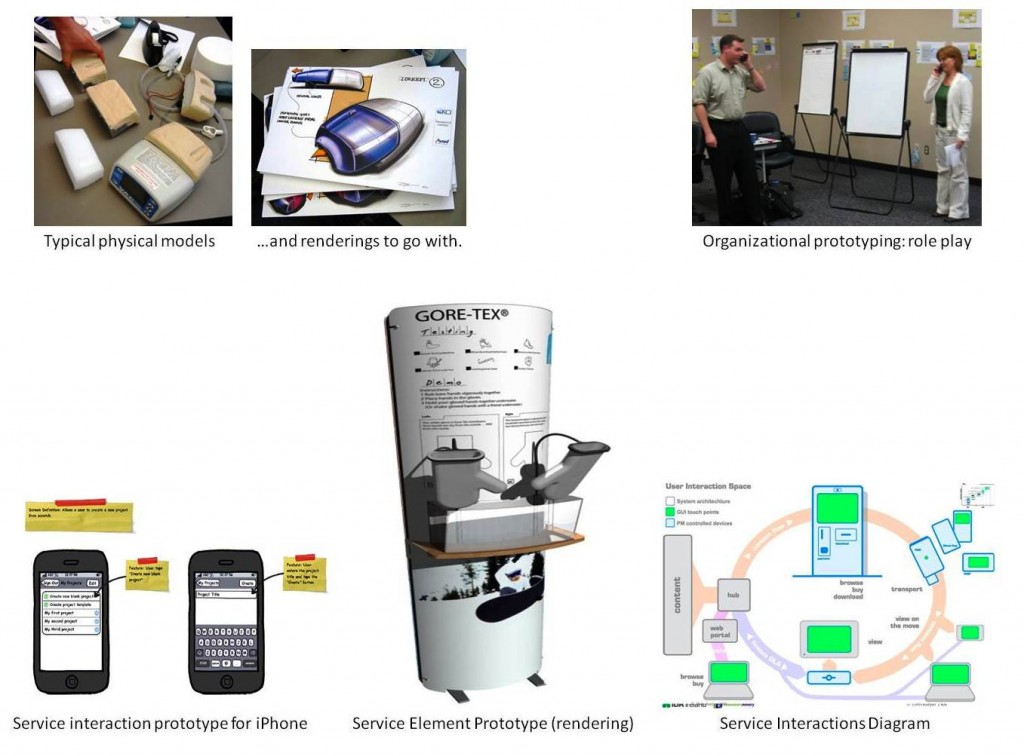

Hi, Abdellah, It seems you put a comment on my Prototyping page from 2011… you may have meant to write this on a different page?
– -Chris
Oh, and I have found that what you say about prototyping in organizational change is totally true. I can often get people in organizations to “experiment” with a new idea (prototyping) rather than “making a change” to the business or process. “Let’s just do a little experiment.” seems to induce people to lower their guard, decrease resistance to change, and accept a new possibility “temporarily”. Naturally, course corrections are often required, but it’s far easier to get people to improve a process they’re experimenting with than to agree on which new process to implement. Starting with “good enough”, experimenting, and then iterating, in organizational change has made it possible for all kinds of changes to be adopted that were flat out rejected during first discussions.
Enjoying Chris’s blog reminds me of working with her in Shanghai last October – vibrant, lively, brimming with creativity! I hope someday you are fortunate enough to experience an in-person workshop with this enormously talented innovation guru.
Thanks for writing, Chris!
If a picture is worth a thousand words, then, surely, a prototype (especially a working one) is worth a thousand pictures. I’ve found that capturing concepts in words and pictures on a white board during a meeting is SO much better than just talking about them. Similarly, there is no better way to show disbelievers how something could be than to show them a working model!
Great post!